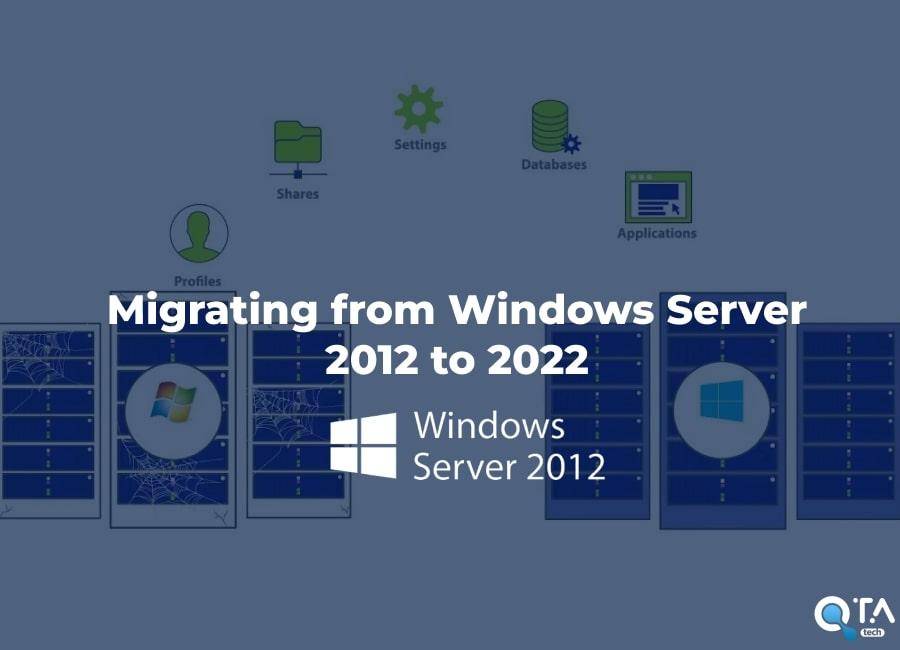Migrating from Windows Server 2012 to 2022
Are you still running Windows Server 2012 in your organization? If so, it's high time to consider upgrading to the latest version, Windows Server 2022. Upgrading to Windows Server 2022 is the ideal way to ensure your system is secure and reliable. In this blog post, we'll explore the migration process from Windows Server 2012 to 2022, as well as the various benefits of making the switch.
Why You Need to Upgrade
Windows Server 2012 has reached its end of support, which means that Microsoft will no longer provide security updates or support for this operating system. Running an unsupported operating system puts your business at risk of security vulnerabilities, compliance issues, and performance problems. Upgrading to Windows Server 2022 ensures that your business stays secure, compliant, and efficient.
Benefits of Upgrading to Windows Server 2022
Windows Server 2022 offers numerous benefits, including:
- Improved Security: Windows Server 2022 includes the latest security features to protect your business from cyberattacks. The Virtualization-Based Security feature uses hardware-based virtualization to create isolated environments for security-critical tasks, protecting against cyber threats and vulnerabilities.
- Enhanced Performance: Windows Server 2022 is designed to deliver optimal performance for your applications and workloads. With faster boot and login times, you'll be able to access your server more quickly and efficiently.
- New Features and Functionality: Windows Server 2022 includes a number of new features and functionality to help you modernize your IT infrastructure. Improved container support allows you to run both Windows and Linux containers on the same host, and integration with Kubernetes streamlines the development and deployment of applications.
Planning the Migration Process
Before starting the migration process, it is essential to assess your current environment, including identifying your servers, their roles, dependencies, configurations, and performance. You should also inventory your applications, databases, and services that run on your servers and determine their compatibility and requirements for the target environment.
Setting up a Test Environment
Before migrating your production environment, it is crucial to set up a test environment to test your migration strategy and identify any potential issues. This includes:
- Creating a Test Environment: Set up a test environment that mirrors your production environment.
- Testing Your Migration Strategy: Test your migration strategy in the test environment to identify any potential issues.
Migrating Your Data and Applications
Once you have tested your migration strategy, you can begin migrating your data and applications. This includes:
- Migrating Data: Migrate your data from the old server to the new server.
- Migrating Applications: Migrate your applications from the old server to the new server.
Post-Migration Tasks and Testing
After the migration, it is essential to perform post-migration tasks and testing to ensure that everything is working as expected. This includes:
- Testing Your New Server: Test your new server to ensure that it is functioning correctly.
- Verifying Data Integrity: Verify the integrity of your data to ensure that it has been successfully migrated.
Training Your Team
To ensure that your team is equipped to manage and maintain your new server, it is crucial to provide them with training on the new operating system and its features.
Maintaining and Updating Your New Server
To keep your new server secure, compliant, and efficient, it is essential to maintain and update it regularly. This includes:
- Applying Security Updates: Apply security updates and patches to ensure that your server remains secure.
- Monitoring Performance: Monitor your server's performance to identify any potential issues.
- Upgrading to New Features: Upgrade to new features and functionality as they become available.
In conclusion, migrating from Windows Server 2012 to 2022 is a critical process that requires careful planning and execution. By following the steps outlined in this article, you can ensure a smooth transition to the latest version of Windows Server, ensuring the security, compliance, and efficiency of your business.
Contact us today to schedule a consultation and begin your migration to Windows Server 2022.
